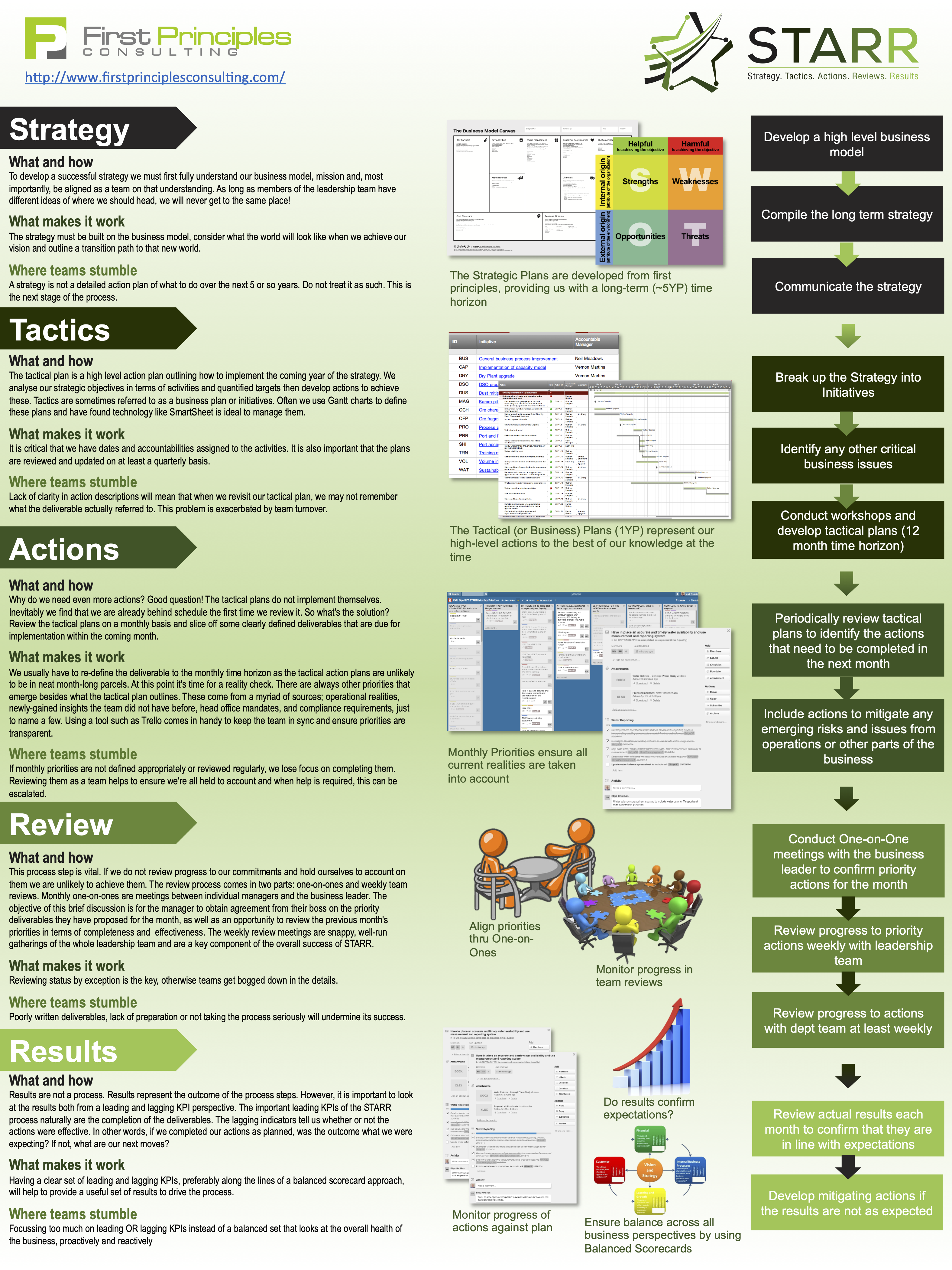We sometimes get asked...
“How can FPC know how well our site works when you’ve never been there?”
1. Strategic intent is lost and disconnected from the people who have to execute it
At the site level, the company’s Strategic intent is unclear and often thought of as ‘corporate BS’. It has very little impact on daily activities on the mine sites. There is no obvious connection between strategy, values, recruiting, L&D programs, the desired culture — and most importantly — projects. The strategic initiatives should be broken down into executable, measurable and trackable projects but more often than not there is little trace of them. Six months into the financial year (or 3 months if you’re lucky) someone remembers to look at the 12-month Tactical Plan (or Business Plan) but by now these initiatives are on the back burner because the site is already lagging behind on its targets.
How this impacts your bottom line — All focus is on BAU (just running the mine) so little to no meaningful strategic progress is ever made. Without strategic progress, over time BAU becomes more and more difficult and the site falls further behind, made worse by falling commodity prices.
2. Management capabilities are not setting teams up for success
Capabilities, such as the ones listed below, are not only often absent but there is little awareness of them:
- managing people (even rudimentary leadership concepts such as Situational Leadership and respecting a chain of command),
- managing projects (the basic understanding and ability to differentiate a ‘job’ from a project; little awareness of the 5 phases of a project or its 10 knowledge areas),
- managing constraints (leaving the bottlenecks unidentified, untreated and unoptimised),
- managing change – both soft (adoption of new practices) and hard (MOC — adequate, cross-functional, team-based impact and risk assessments, planning and execution),
- the ability to run effective meetings (that have the right people, an actual purpose, a clear agenda, an outcome and don’t suck the will to live from its participants),
- basic understanding of continuous improvement cycles and how they apply to everyday production
Why? Unfortunately, we find little evidence of an effective Capability Framework: Training, L&D and onboarding are haphazard (with the exception of where the companies make training mandatory, like safety inductions, etc.)
How this impacts your bottom line — Not being able to operate optimally and having to rework many aspects of production means you are leaving money on the table.
We never have time to do it right but we always have time to do it twice.
3. Processes are broken and ineffective
Because management capabilities are insufficient for success, we find that the related business processes are also ineffective. Furthermore, there is little understanding of what defines an effective process (i.e. process ownership, documentation, training, accountability, quality and timely outcomes).
How does this impacts your bottom line — Effective business processes are the drumbeat of the operation; without them, there is lost production time, reduced pace, more incidents and less physical output on the ground and less money in the bank at the end of the quarter.
4. Leadership is not respected or trusted
- Leaders aren’t following the chain of command — by breaking the chain, they undermine the authority of their managers, superintendents or supervisors, sabotaging trust
- Leaders are not holding their subordinates accountable — either the expectations were never clearly set or if they were, they’re not met, yet there is no consequence, even no feedback. This leads to an ‘anything goes’ culture
- Leaders do not adapt their leadership style to the situation — there is a general belief that each one of us is hardwired with a certain leadership style, when in fact, leadership is not a one size fits all behaviour. To be a successful leader, one must adapt one’s style to the situation and one subordinate’s capabilities, to achieve the desired outcome
- The most common cause of these issues is that leadership skills aren’t taught or not taught well enough — leadership is after all a teachable skill, not an innate one
- How this impacts your bottom line — People often try their hardest at work, with or without effective leadership, but only for so long. There comes a time when their patience runs out and they leave. The best ones are generally the first to leave.
5. The site culture has become counterproductive and most people are working one or two levels below their station
Working on a troubled site is not fun. It’s tiring, stressful, and leads to increased incidents, absenteeism and turnover. The team dynamic becomes counterproductive. Morale drops and instead of cross-functional collaboration, people withdraw into their little silo castles and pull the drawbridge up on their moat.
How this impacts your bottom line — Low employee engagement is too important to ignore. As Peter Drucker said, culture eats strategy for breakfast. No matter how great your business strategy is, your plan will fail without a company culture that encourages people to implement it.






